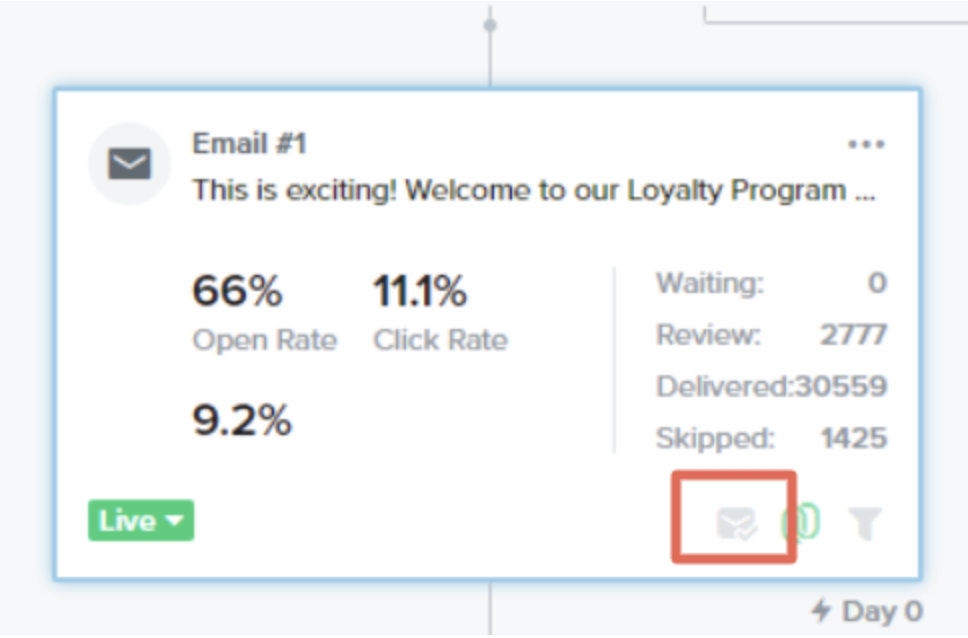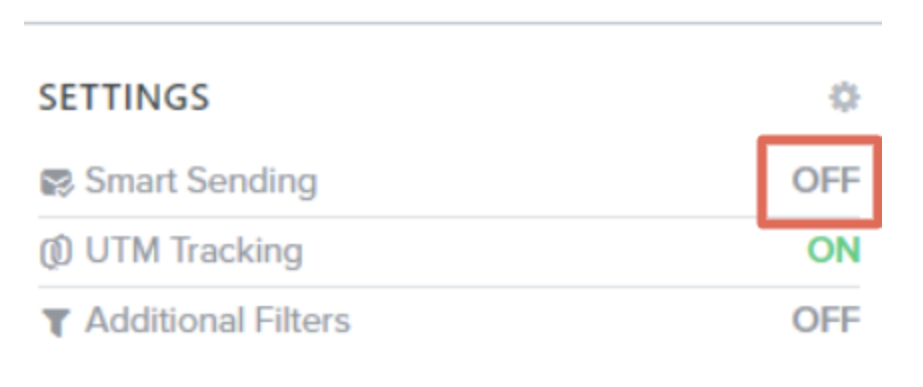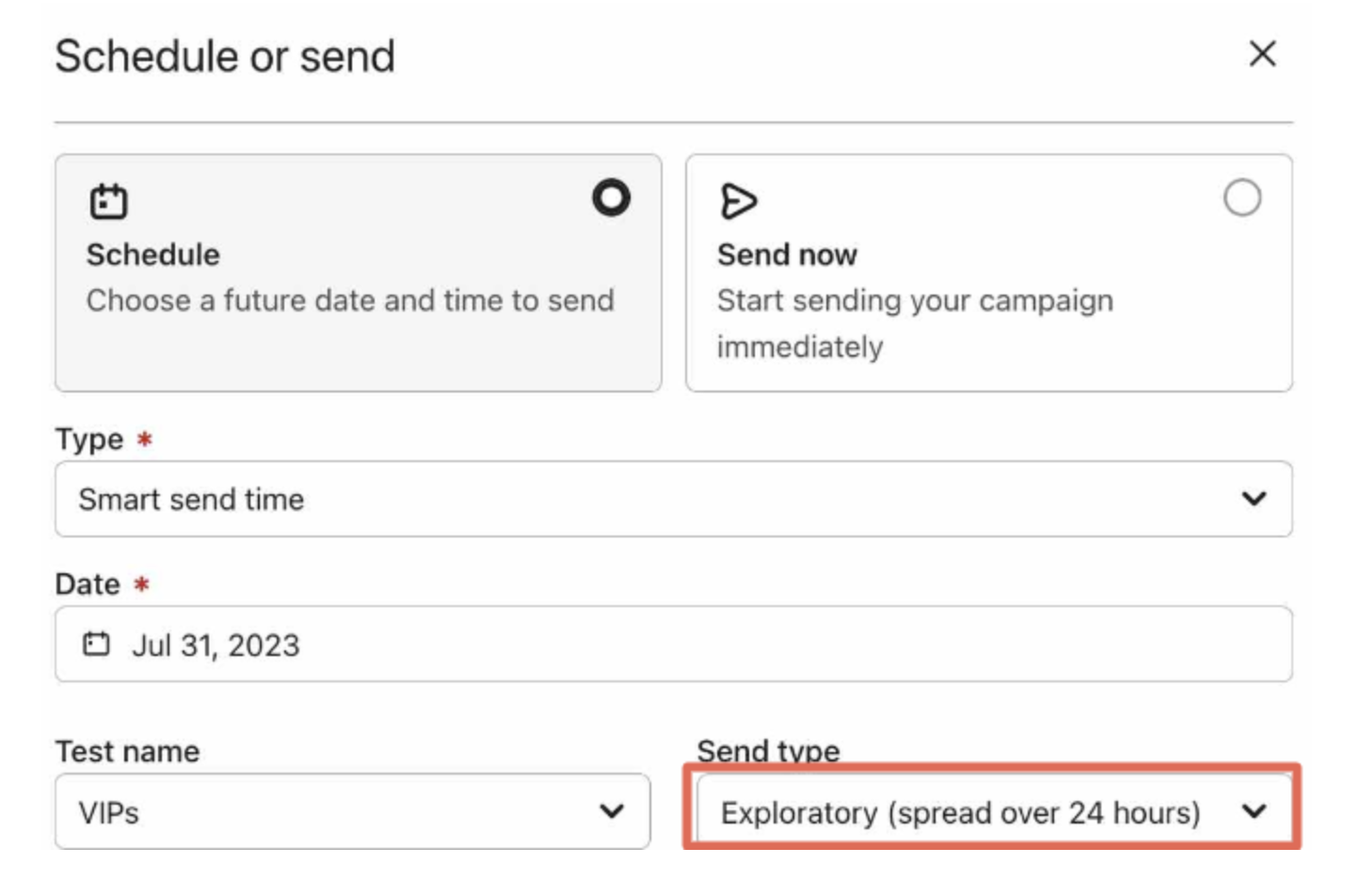Are you treading a fine line between engaging your email audience and overwhelming them with too many emails? Consistency is key, but overcommunicating can lead to a frustrating experience.
On the flip side, undersending is another common trap, as it can leave significant amounts of revenue on the table.
The solution to both issues is to master Klaviyo’s smart sending feature, thus calibrating your email send times, according to your target audience.
Smart Sending is a robust Klaviyo feature that aims to prevent the issue of over-sending emails to the same recipient within a short timeframe.
Smart Sending is turned on by default, and set to 16 hours. This means that if someone already received an email in the last 16 hours, they won’t receive another unless Smart Sending is turned off.
You can easily toggle smart sending on and off on the campaign level, below the section where you select segments (in our example, we’ve switched the window from 16 hours to 8 hours).

Similarly, you can easily do so on the flow level. Click on the flow email.

On the left panel, switch smart sending off:

Lastly, you can adjust the 16-hour window to your liking, across your entire account here.
Smart Sending acts as a buffer against email fatigue, a common issue where recipients become overwhelmed or annoyed by a bombardment of emails, leading to lower engagement rates.
By ensuring that emails are sent out in a measured and timely manner, Smart Sending helps promote better sending habits and can improve your sender’s reputation.
In turn, this can help you avoid deliverability issues and decrease your chances of getting sidetracked to the spam folder.
From an account management perspective, it can be of great help, especially if you do not have an in-house email marketing expert, or an agency partner like YOCTO, as it will prevent email overlap issues without constant manual oversight.
While Smart Sending is a powerful tool for managing email frequency and promoting healthier sending habits, it’s not without its drawbacks. The feature operates on the broad (and wrong) assumption that all messages have the same level of importance.
This can prevent the delivery of critical or time-sensitive messages, lowering your account’s revenue potential. For instance, imagine you’re sending out a promotional message, intended to reach as many recipients as possible.
If smart sending is activated, many recipients may miss out on this important email simply because they received an email newsletter.
Similarly, if someone receives a campaign email, starts the checkout process, and abandons it before completing a purchase, and Smart Sending is enabled on the checkout abandonment flow, they won’t receive the checkout abandonment emails, which are massive revenue drivers.
As a rule of thumb, here are some general guidelines to help you determine when to use Smart Sending.
Behavioral Automation: It’s best to turn off Smart Sending for all behavioral automations. This includes browse abandonment, checkout abandonment, post-purchase communication, and welcome journeys. These types of communications are triggered by specific user behaviors and are generally of high priority. Ensuring that these emails reach the user promptly can significantly boost user engagement and conversion rates.
General Campaign Messages: For general campaign messages that aren’t time-sensitive or tied to specific user actions, keeping Smart Sending activated is a good practice. This will help prevent email fatigue, maintain a healthy sender reputation, and ensure a pleasant user experience by not overwhelming recipients with too many emails in a short timeframe. Smart Sending can effectively manage the frequency of such emails, optimizing the chances of engagement.
High-Priority Campaign Messages: For campaigns where you have a time-sensitive element, or where maximizing reach is a priority, such as Black Friday or other seasonal promotions, it’s wise to deactivate Smart Sending. These campaigns are often time-bound and aim to reach as many recipients as possible to drive traffic, sales, or other desired actions. By turning off Smart Sending, you ensure that these high-priority messages reach the inbox of your recipients, maximizing the reach and potential success of the campaign.
While Smart Sending offers a level of control over email frequency, there are more advanced techniques that provide a deeper level of customization. One such technique is leveraging custom property tagging within your key automations, which allows for more nuanced management of your email campaigns.
Custom Property Tagging is a technique where a small piece of information, known as a custom property, is stored at the subscriber profile level. This property can be stored in a binary manner, often in a boolean format, enabling you to tag users based on their interaction with certain automations.
For instance, consider a scenario where a subscriber enters a welcome flow. You could tag this subscriber with a custom property such as “Receives Welcome Flow = True”. Similarly, when they exit the welcome flow, the property can be updated to “Receives Welcome Flow = False”. This simple yet effective tagging mechanism helps in identifying where each subscriber is in their journey, thus enabling more targeted and relevant communications.
Next, you can create segments of users based on the custom properties associated with their profiles. These segments can then be manually included or excluded from specific campaigns. For example, if you wish to exclude users who are currently in the welcome flow from a general promotional campaign, you can do so with ease by utilizing these segments.
The beauty of Exclusion Segments lies in the cleaner attribution they facilitate. By ensuring that users who are in core flows aren’t simultaneously receiving campaigns, you eliminate the risk of overwhelming or confusing your subscribers with mixed messages. Furthermore, this level of segmentation allows for more granular control over your email marketing strategy, enabling you to tailor your campaigns with precision to a specific segment of customers.
Smart Sending and Smart Send Time are two distinct features that serve different purposes in managing your email campaigns. Smart Sending is designed to prevent the over sending of emails to the same recipient within a specified timeframe. On the other hand, Smart Send Time is geared towards determining the optimal time to send emails to each recipient.
Smart Send Time utilizes a machine learning model to predict when each recipient is most likely to engage with an email based on their past engagement data. This feature aims to maximize the open rates and engagement by delivering emails at the most opportune time for each individual recipient in your email list or segment.
It’s only available as a feature when your campaign includes an audience of over 12,000 people (and preferably greater) and you can’t set this up if you’ve already set up an A/B test for your campaign (like a subject line test). You’ll find it as an option when you try and schedule a campaign:

In short, here’s how Smart Send Time works:
Exploratory send time: An exploratory send is initiated where emails are sent out over a 24-hour period. Email recipients are randomly assigned a time to receive the email during this period of time, all in their local time. Then, Klaviyo aims to understand what specific hour during the day results in the highest engagement. Depending on the size of your recipient list, you might need to conduct multiple exploratory sends, as one individual email likely won’t gather enough data for accurate analysis.
Focused send time: During this phase, Klaviyo continues to validate the determined optimal send time from the exploratory send phase. Three emails are scheduled: one at the optimal send time, and two others in a two-hour window from the optimal send time (one hour before and one hour after). For instance, if 7 a.m. is identified as the optimal send time, recipients are divided into thirds. One-third will receive the email at 7 a.m., another third at 5 a.m., and the final third at 9 a.m., all in the recipient’s local time.
Optimal send time: Unlike the previous phases, the optimal send phase operates on a fixed send time in each timezone, ensuring that all recipients receive the email at, for instance, 10:00 p.m. their local time. It provides a streamlined approach to sending campaigns at the ideal send time to garner engagement, thus enhancing the potential success of your email marketing sends.
Head over to our blog page to discover our latest content on optimizing your email marketing strategy. If you liked this article you might also enjoy our Klaviyo double opt-in tutorial. Alternatively, go ahead and read our series on optimizing your welcome flow, your retargeting flows, and your post-purchase automations.
Let’s build something extraordinary together.
Do you need
to maximize your
profits?